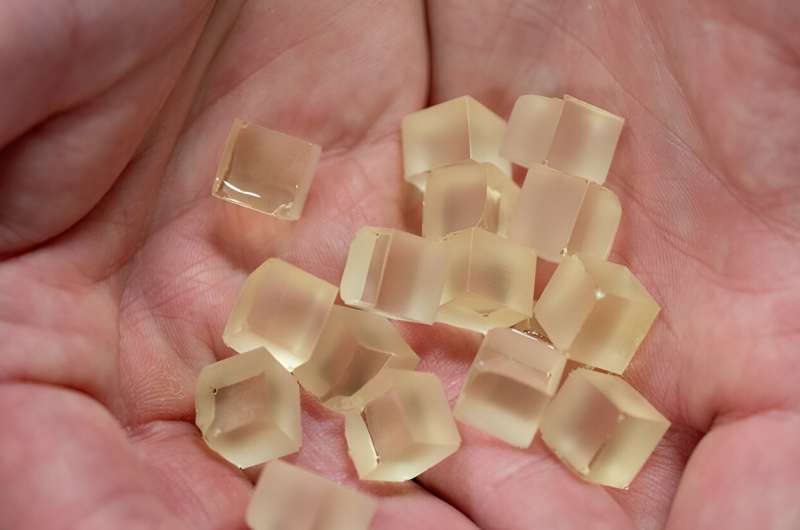This article has been reviewed according to Science X's editorial process and policies. Editors have highlighted the following attributes while ensuring the content's credibility:
fact-checked
peer-reviewed publication
trusted source
proofread
Resin made from biomass advances method for manufacturing recyclable wind turbine blades

Researchers at the U.S. Department of Energy's National Renewable Energy Laboratory (NREL) see a realistic path forward to the manufacture of bio-derivable wind blades that can be chemically recycled and the components reused, ending the practice of old blades winding up in landfills at the end of their useful life.
The findings are published in the journal Science. The new resin, which is made of materials produced using bio-derivable resources, performs on par with the current industry standard of blades made from a thermoset resin and outperforms certain thermoplastic resins intended to be recyclable.
The researchers built a prototype 9-meter blade to demonstrate the manufacturability of an NREL-developed biomass-derivable resin nicknamed PECAN. The acronym stands for PolyEster Covalently Adaptable Network, and the manufacturing process dovetails with current methods.
Under existing technology, wind blades last about 20 years, and afterward they can be mechanically recycled, such as shredded for use as concrete filler. PECAN marks a leap forward because of the ability to recycle the blades using mild chemical processes.
The chemical recycling process allows the components of the blades to be recaptured and reused again and again, allowing the remanufacture of the same product, according to Ryan Clarke, a postdoctoral researcher at NREL and first author of the new paper. "It is truly a limitless approach if it's done right."
He said the chemical process was able to completely break down the prototype blade in six hours.
The paper, "Manufacture and testing of biomass-derivable thermosets for wind blade recycling," involved work from investigators at five NREL research hubs, including the National Wind Technology Center and the BOTTLE Consortium. The researchers demonstrated an end-of-life strategy for the PECAN blades and proposed recovery and reuse strategies for each component.
"The PECAN method for developing recyclable wind turbine blades is a critically important step in our efforts to foster a circular economy for energy materials," said Johney Green, NREL's associate laboratory director for Mechanical and Thermal Engineering Sciences.
The research into the PECAN resin began with the end. The scientists wanted to make a wind blade that could be recyclable and began experimenting with what feedstock they could use to achieve that goal. The resin they developed using bio-derivable sugars provided a counterpoint to the conventional notion that a blade designed to be recyclable will not perform as well.
"Just because something is bio-derivable or recyclable does not mean it's going to be worse," said Nic Rorrer, one of the two corresponding authors of the Science paper. He said one concern others have had about these types of materials is that the blade would be subject to greater "creep," which is when the blade loses its shape and deforms over time.
"It really challenges this evolving notion in the field of polymer science, that you can't use recyclable materials because they will underperform or creep too much."
Composites made from the PECAN resin held their shape, withstood accelerated weatherization validation, and could be made within a timeframe similar to the existing cure cycle for how wind turbine blades are currently manufactured.
While wind blades can measure the length of a football field, the size of the prototype provided proof of the process.
"Nine meters is a scale that we were able to demonstrate all of the same manufacturing processes that would be used at the 60-, 80-, 100-meter blade scale," said Robynne Murray, the second corresponding author.
More information: Ryan W. Clarke et al, Manufacture and testing of biomass-derivable thermosets for wind blade recycling, Science (2024). DOI: 10.1126/science.adp5395















